Towson University celebrates 50 years of nursing graduates
From 13 degrees to more than 6,500, nursing graduates continue to meet community public health needs
In 1974, the first cohort of nursing students graduated from Towson State University, the only state college for nursing at the time. Since those students received their degrees 50 years ago, the Department of Nursing has seen major growth alongside the College of Health Professions and prepared more than 6,500 trusted nursing professionals to serve communities and practice in a rapidly changing health care environment.
“Since its inception, the nursing department has always been responsive to the needs of the community,” says Dean Lisa Plowfield, College of Health Professions. “Looking back, we can see how dedicated the faculty was—and continues to be—in prioritizing student success.”
Technology
According to Mary Lashley ’81, a nursing faculty member since 1986, the curriculum has always been forward-thinking and progressive, but it has notably changed since the department’s inception.
“There have been huge changes in technology since I was a student. What we do to prepare students for practice is unprecedented—and it’s achieved through many different modalities,” says Lashley.
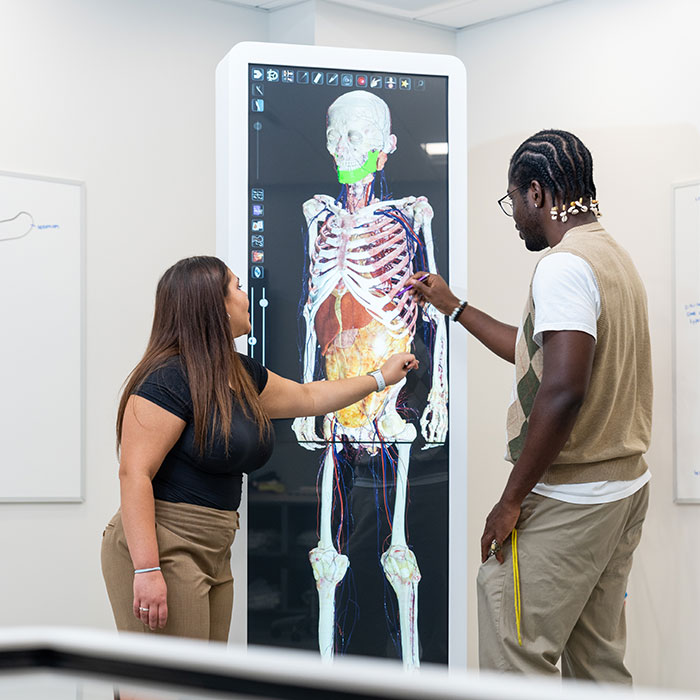
The modalities include state-of-the-art simulation that provides experiential learning for students.
In the new Health Profession building that opened its doors in fall 2024, students can also find augmented and virtual reality; simulations with standardized patients (professional actors); virtual body labs with digitized real cadavers; opportunities to practice telehealth and technology compatible with mobile phones and apps.
Lashley recalls, “We only had an adult baby doll named Mrs. Chase. Now the students have mannequins that can breathe, bleed, speak and give birth.”
Student Wellness
Over the decades, the College of Health Professions overall and the Department of Nursing have developed support services for the students.
Our responsibility is not only to promote the health of patients we are serving but to focus on nurse well-being and resiliency.
Mary Lashley '81
“Our responsibility is not only to promote the health of patients we are serving but to focus on nurse well-being and resiliency,” says Lashley. The department has a dedicated support specialist to help students find supplemental instruction and tutoring opportunities. The new building also has a rooftop respite garden that offers a space for nursing students to take time for themselves before or after difficult simulations to encourage attention to their self-care.
Diversity, Equity and Inclusion
As curriculum advanced and continued to respond to needs in the community, the department instilled a greater focus on diversity, equity and inclusion. Part of clinical experiences now require students to address the larger context of the patient, including the environment they’re coming from, the resources the person has and family background.
The student body in the nursing department has also diversified since the inception of the program. During the 1990s, 6% of Bachelor of Science in nursing degrees were conferred to men, which has increased to 12% in the 2020s. Racial and ethnic diversity has also increased. During the 1990s, 14% of degrees were conferred to students from underserved racial and ethnic backgrounds and increased to 40% of conferred degrees during the 2020s.
“We’re really seeking to help every person that comes here to be successful through individualized pathways that give each student what they need,” says Lashley.
Interprofessional Learning and Curriculum
Interprofessional learning experiences have evolved over time, and new spaces in the Health Professions building have been intentionally designed to promote collaboration. While learning together, students engage with other nurses and health care providers to gain experience and understanding of what it will be like working in hospitals and serving the community upon graduation.
Current nursing students engage in nursing practical courses where they have an internship
or nursing mentor where they experience the schedules nurses have.
“By providing students with realistic experiences, we’re hoping they will have a better
feel of the profession so after graduation they won’t be shocked,” says Hyunjeong
Park, chair of the Department of Nursing. “This department has always been responsive
to the needs of the community, so we also increased the technology in clinical care
to make sure students have more knowledge and keep patient safety at the forefront.”
This department has always been responsive to the needs of the community, so we also increased the technology in clinical care to make sure students have more knowledge and keep patient safety at the forefront.
Dr. Hyunjeong Park
This year, Towson nursing ranked first in Maryland on the NCLEX pass rate for the bachelor's and master’s programs. “This excellent achievement attests to the strength of the curriculum and the dedication of both faculty and students in the department of nursing,” says Plowfield.
Program Impact
Nursing graduates’ No. 1 destination beyond graduation is Maryland and the surrounding regions. In fact, according to Towson University’s Career Center, 95.3% of working graduates from the Class of 2023 are employed in the DMV. Top employers are in Baltimore County, Baltimore City, Washington D.C., Howard County and Washington County.
Nursing graduates’ No. 1 destination beyond graduation is Maryland and the surrounding regions.
Karen Keady ’87, began her nursing career in Maryland where she went on to complete her master’s and doctorate at Johns Hopkins while working. Now, she’s using the foundational skills she developed at TU as the system chief nursing officer for the Vanderbilt University Medical Center. In her leadership role, Keady looks for TU nursing grads. “Whenever the TU grad would come, I would always be so excited,” she says. Her close friend, a nurse who inspired Keady to attend TU, told her “I always like to hire Towson grads. They are the best nurses I ever hire, and if I can get a Towson grad, I’ll take them over anybody else,” according to Keady.
What’s Next?
The Department of Nursing will continue monitoring industry best practices and the faculty will continue helping students achieve success.
“I’m not sure what our technology will be in the next 50 years, but what I do know is that our phenomenal, passionate nursing faculty will lead us forward,” says Plowfield. “I would expect the department to continue to be responsive to society’s needs, keeping student success and advancing community health as their top priorities.”
Photo Gallery
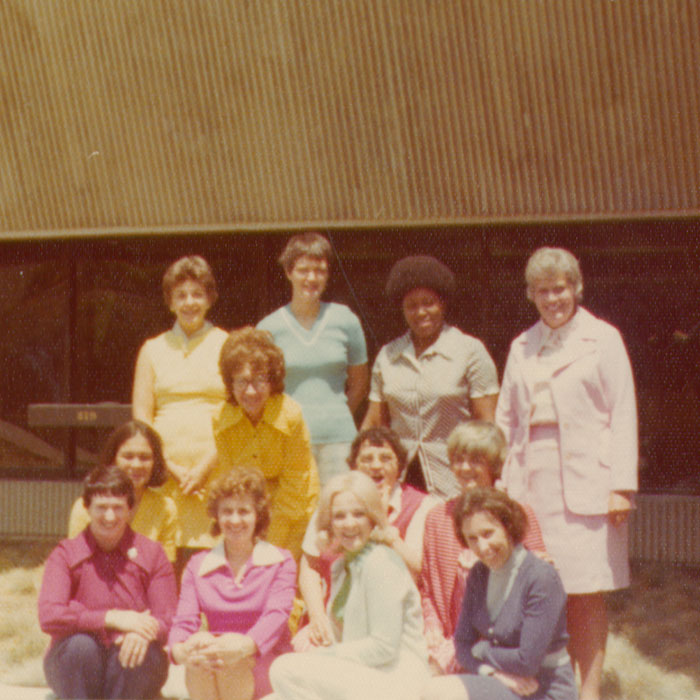
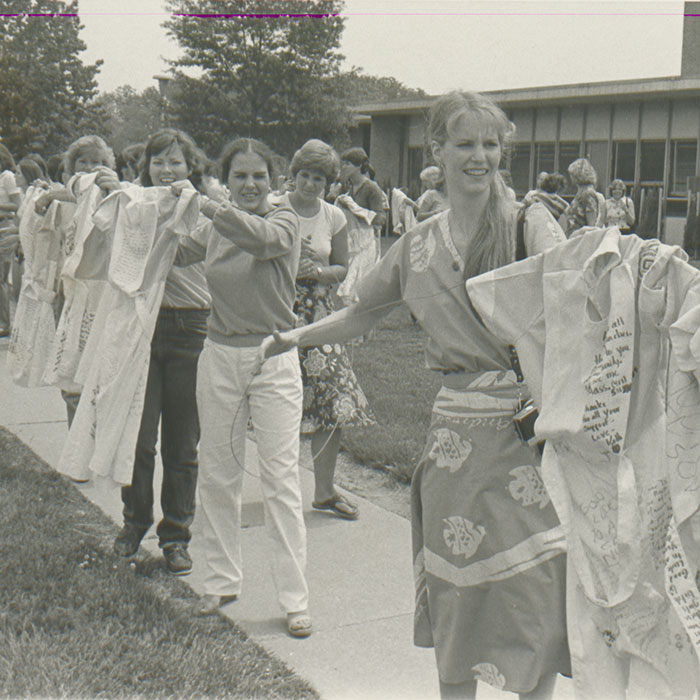
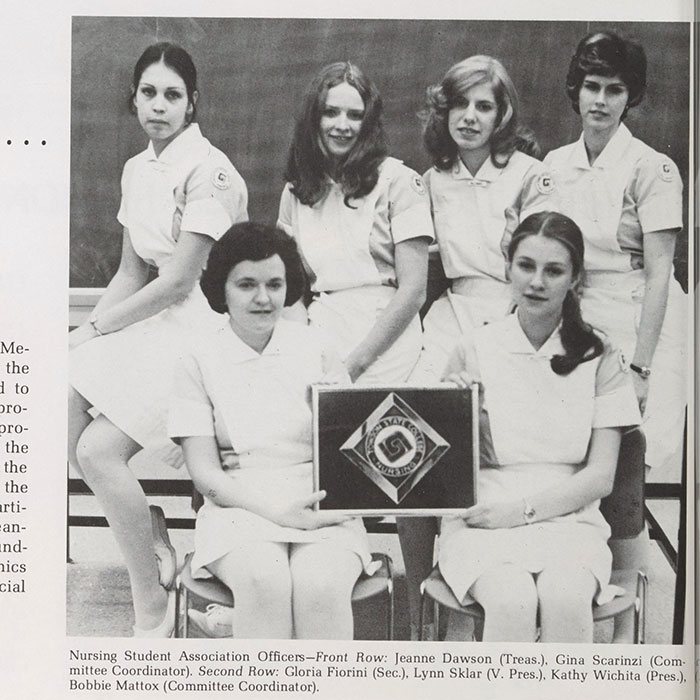
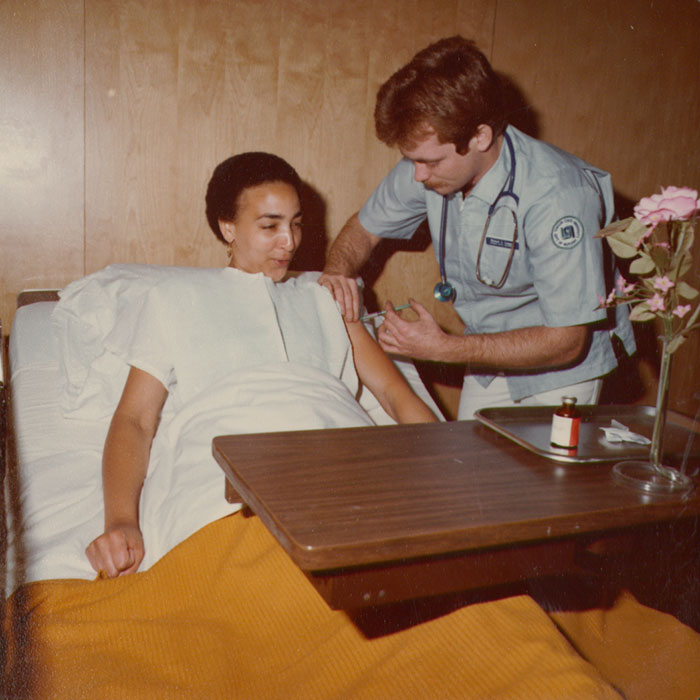
Department of Nursing faculty from 1974 (top left); Students in the Class of 1982 hang their white coats over Towsontown Blvd (top right); Highlight in the newspaper featuring the Nursing Student Association in 1975 (bottom left); Nursing student practicing fundamental skills in 1981 (bottom right)